Yields on 10-year US Treasury bonds have risen to 5%, thus reaching their highest level since 2007, when financial markets were on the eve of the financial crisis. This phenomenon seems to be the result of rising expectations of future interest rates, on which bonds are largely dependent. The great American investor Warren Buffett once aptly compared interest rates to gravity prevailing in the markets, which we are now seeing in the form of falling bond values and rising bond yields. So let's consider what the opportunities are for investing in bonds and the potential opportunities this market may currently present.
Table of contents:
What are bonds?
Bonds are securities issued by governments, corporations or other institutions that need capital to finance their activities. Bonds are an alternative to borrowing from a bank, where the issuer (the person or institution that issues the bonds) undertakes to pay a certain amount (the nominal capital) on a certain date, and to pay interest (the interest rate) on the nominal capital of the bond at regular periods until the bond matures.
If we look at the value of this market, we see that it even outperforms the stock market. According to data from Statista, the total value of the global equity market was $98.5 trillion compared to the $133 trillion value of the bond market. The bond yield, an indicator that expresses the current state of the market, tells us how much we can expect to receive annually from a given investment. It is a natural inverse representation of bond prices, which pay fixed coupons. Therefore, if we see a rise in bond yields, this simultaneously means a fall in their prices.
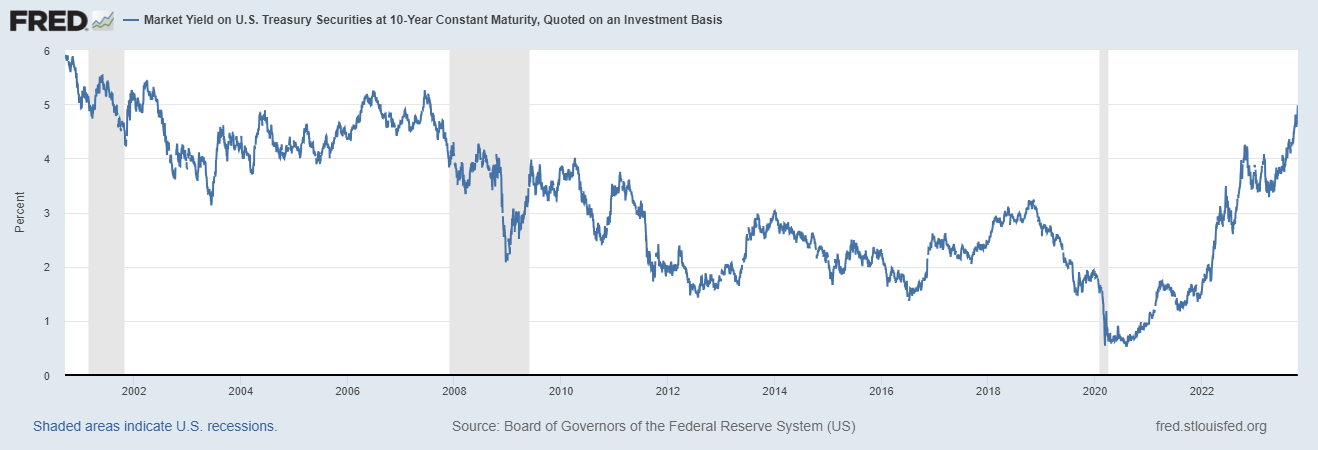
Source: Fred
Why are bonds falling?
There are two main types of risk associated with bond investments. The first is credit risk, which is inherent in all debt and associated with the potential insolvency of the issuer. The second is the risk associated with fluctuations in interest rates, which affect the terms of issuance of new government bonds.
Therefore, declines in the value of bonds can be the result of increased risk of insolvency of the issuer (sovereign, or company) or expectations of reductions in future interest rates. If we look at the latter type of risk, we see that in the current derivatives market, the probability of another interest rate hike (from the FedWatch tool) by the Federal Reserve (Fed) is very low. As global markets deteriorate, where we are already seeing a recession in many places, we can expect interest rate cuts to occur next year.
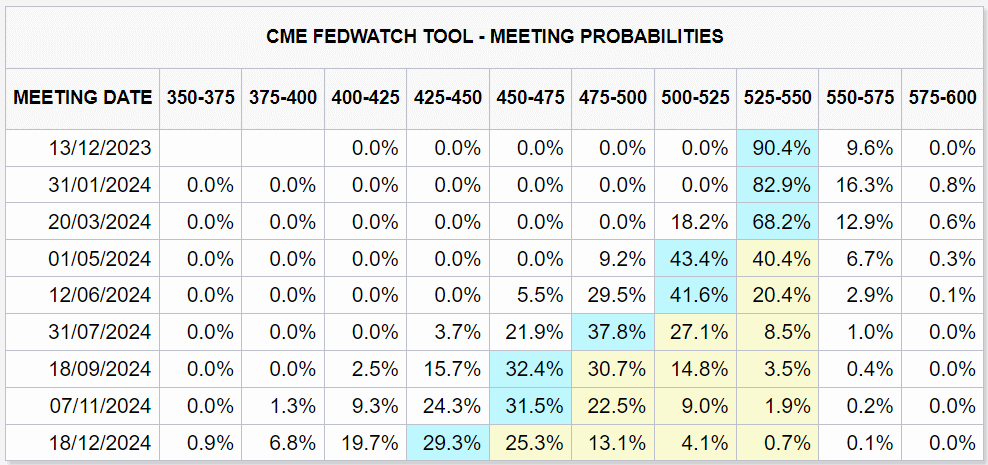
Source: FedWatch
To mitigate the risk of issuer default, instead of focusing on analysing the financial situation of individual companies or countries, one can consider investing in ETFs that invest in diversified portfolios of bonds from different issuers. In the event that one of the issuers is unable to repay its bonds, such a situation will not significantly affect our investment, as the portfolio is diversified and independent of individual issuers. We will look at the most interesting of these below.
When do bonds go up?
The most important factor influencing the magnitude of changes in bond prices is their so-called duration, or time to maturity. Accordingly, short-term bonds with a duration to maturity of one to five years usually have smaller price fluctuations than long-term bonds (over 10 years). A longer investment period carries greater risk, for example in the form of adverse changes in the issuer's circumstances. Under normal circumstances, we would expect long-term bonds to yield higher returns in return for a longer investment period.
However, we are currently seeing the opposite situation. The yield difference between 10-year and 2-year bonds is negative, which means that short-term bonds offer higher returns than long-term bonds. This phenomenon is significant because, in the past, such a negative difference heralded a recession (shown in gray in the chart). Currently, this differential has fallen from -1 per cent to -0.19 per cent. When it starts to rise and becomes positive, this usually means that long-term bond yields (over 10 years) are rising. There is a likelihood, therefore, that such an increase could already begin in the coming months.
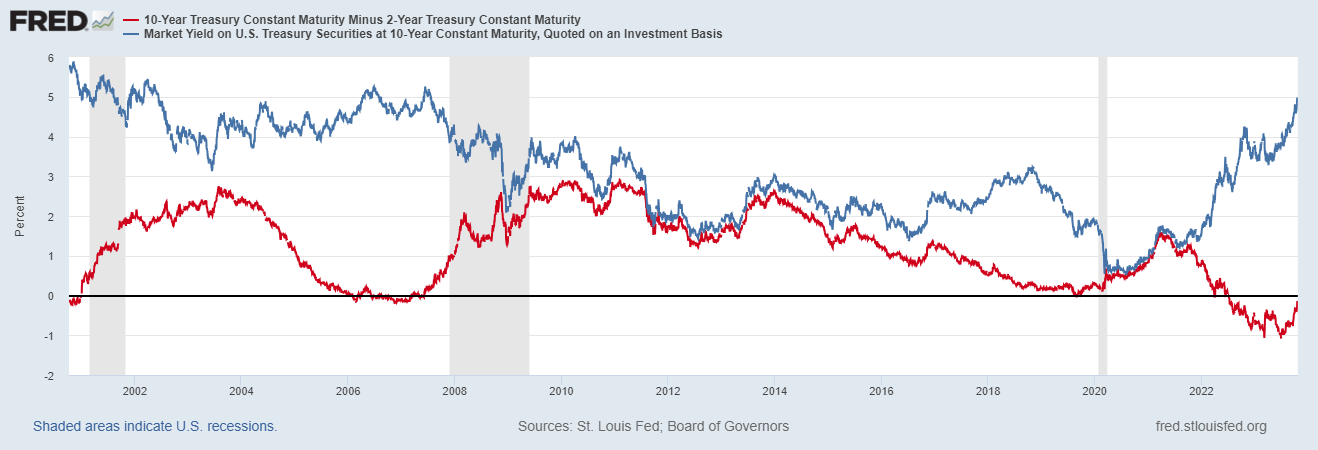
Source: Fred
Which bonds are the most profitable?
Duration, or the actual time to maturity of a bond, is a key indicator affecting the magnitude of bond price movements in response to changes in interest rates. In other words, if interest rates fall by 2 percentage points, a bond with a Duration of 10 will increase in price by around 20 per cent. An example of an ETF with one of the longer Durations is the iShares 20+ Year Treasury Bond ETF (TLT). The Duration of the bond in this fund is 16.1. This has caused the value of this fund to fall by as much as 53 per cent from its peak, when interest rates approached zero. If this trend reverses, we can expect it to become one of the funds likely to gain the most in value. If interest rates remain unchanged, we can expect that the average annual return on this fund could be around 5.21 per cent. Here is a list of interesting bond investment funds:
-
iShares 20+ Year Treasury Bond ETF (TLT)
ETF on: long-term US Treasury bonds
Duration: 16.1
Yield (YTM): 5,21%
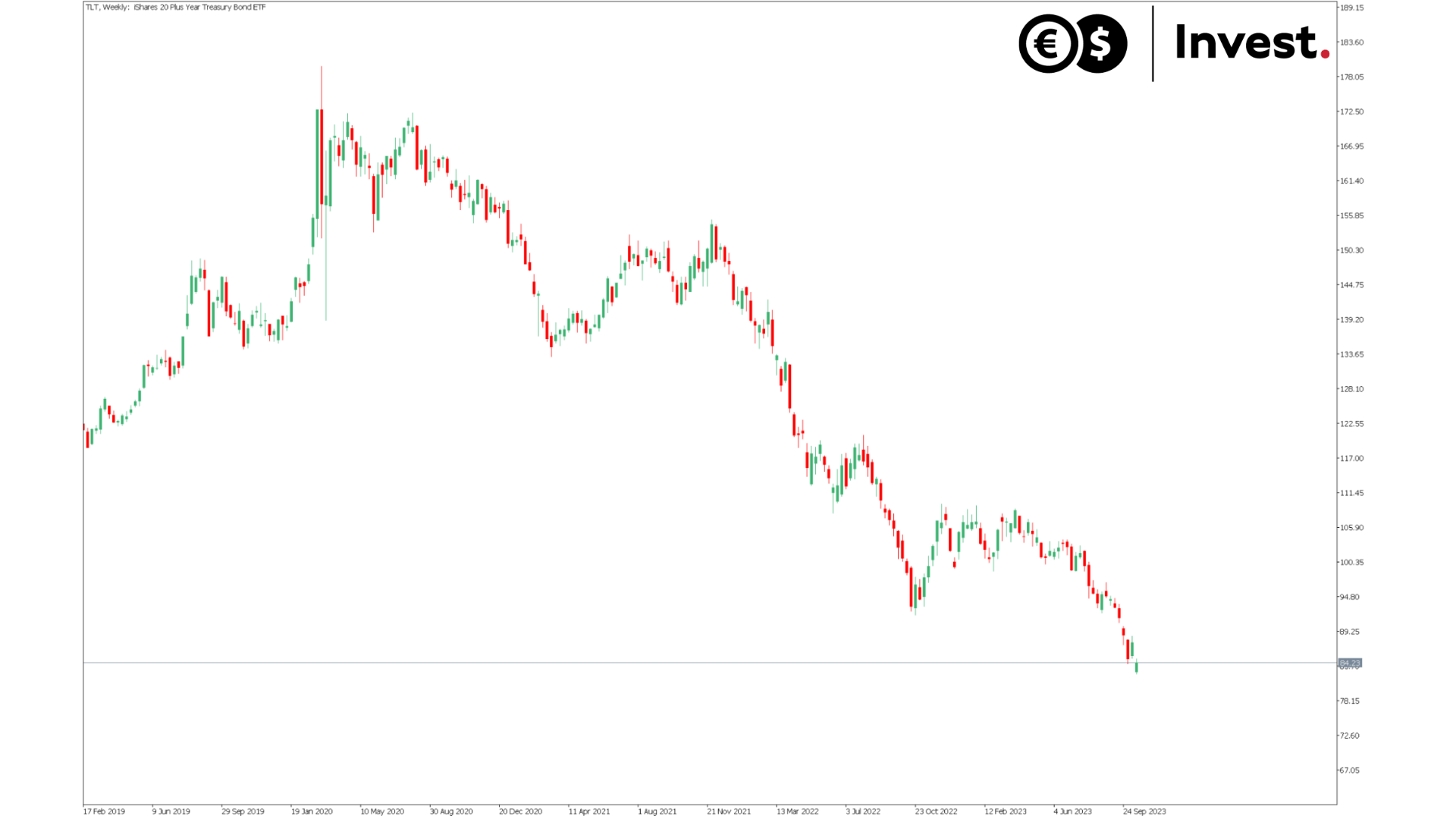
Source: Conotoxia MT5, TLT, Daily
-
iShares iBoxx $ High Yield Corporate Bond ETF (HYG)
ETF on: high-yield US corporate bonds with an investment grade rating of BBB.
Duration: 3.71
Yield (YTM): 9,41%
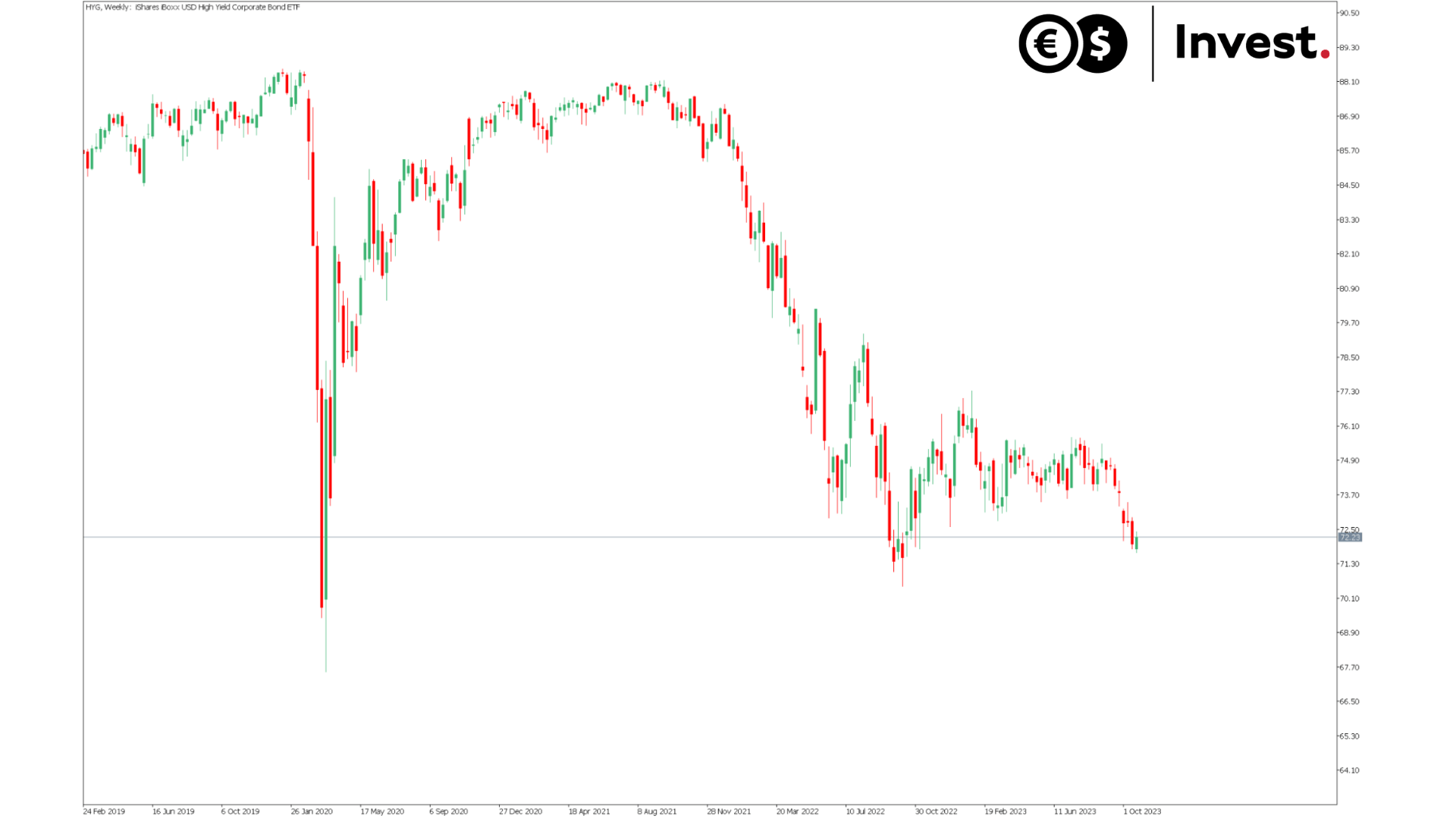
Source: Conotoxia MT5, HYG, Daily
-
iShares iBoxx $ Investment Grade Corporate Bond ETF (LQD)
ETF on: over 1,000 US investment grade corporate bonds.
Duration: 7.88
Yield (YTM): 6,4%
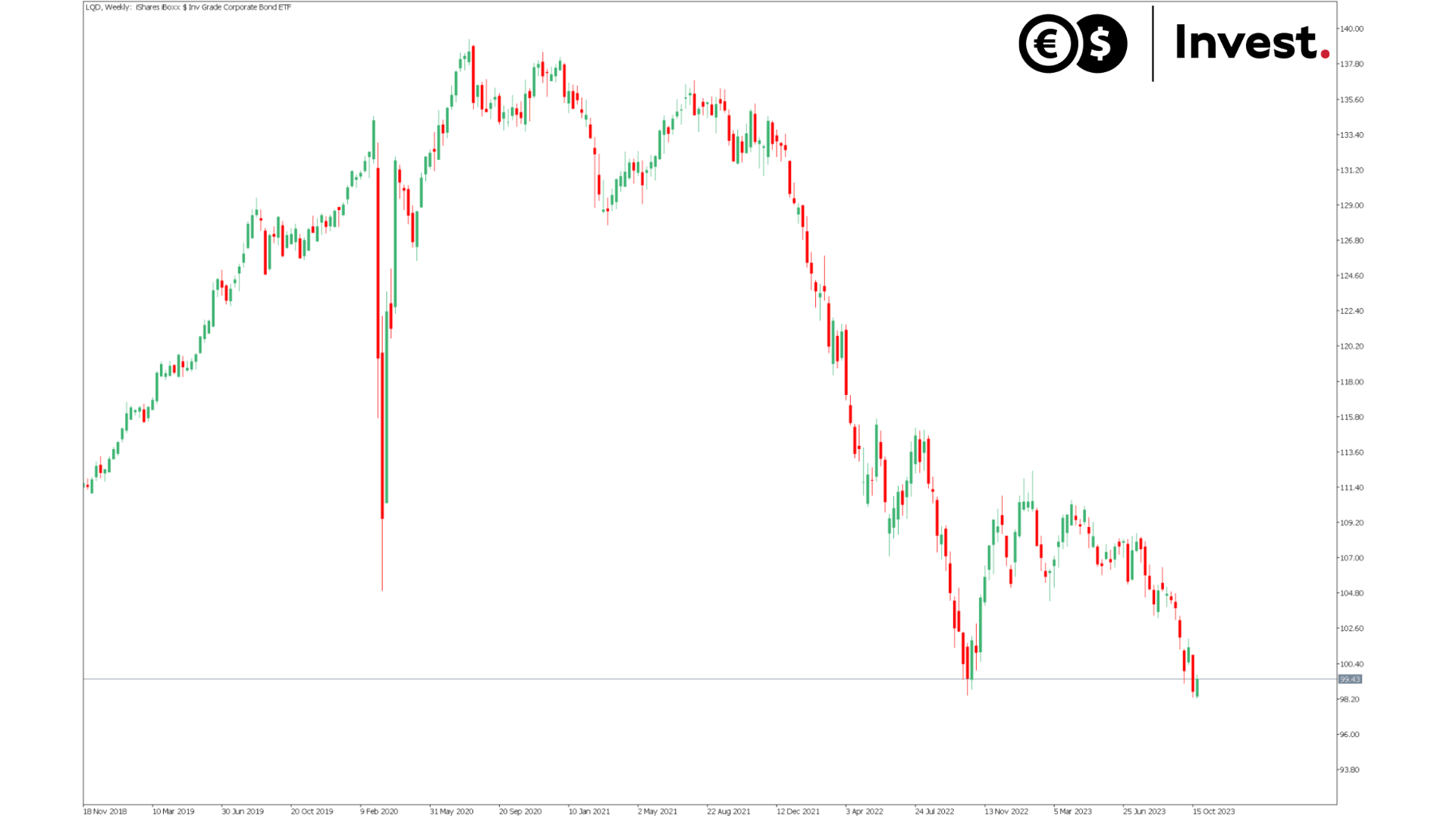
Source: Conotoxia MT5, LQD, Daily
-
iShares 7-10 Year Treasury Bond ETF (IEF)
ETFs on: US medium-term treasury bonds
Duration: 7.3
Yield (YTM): 4,92%
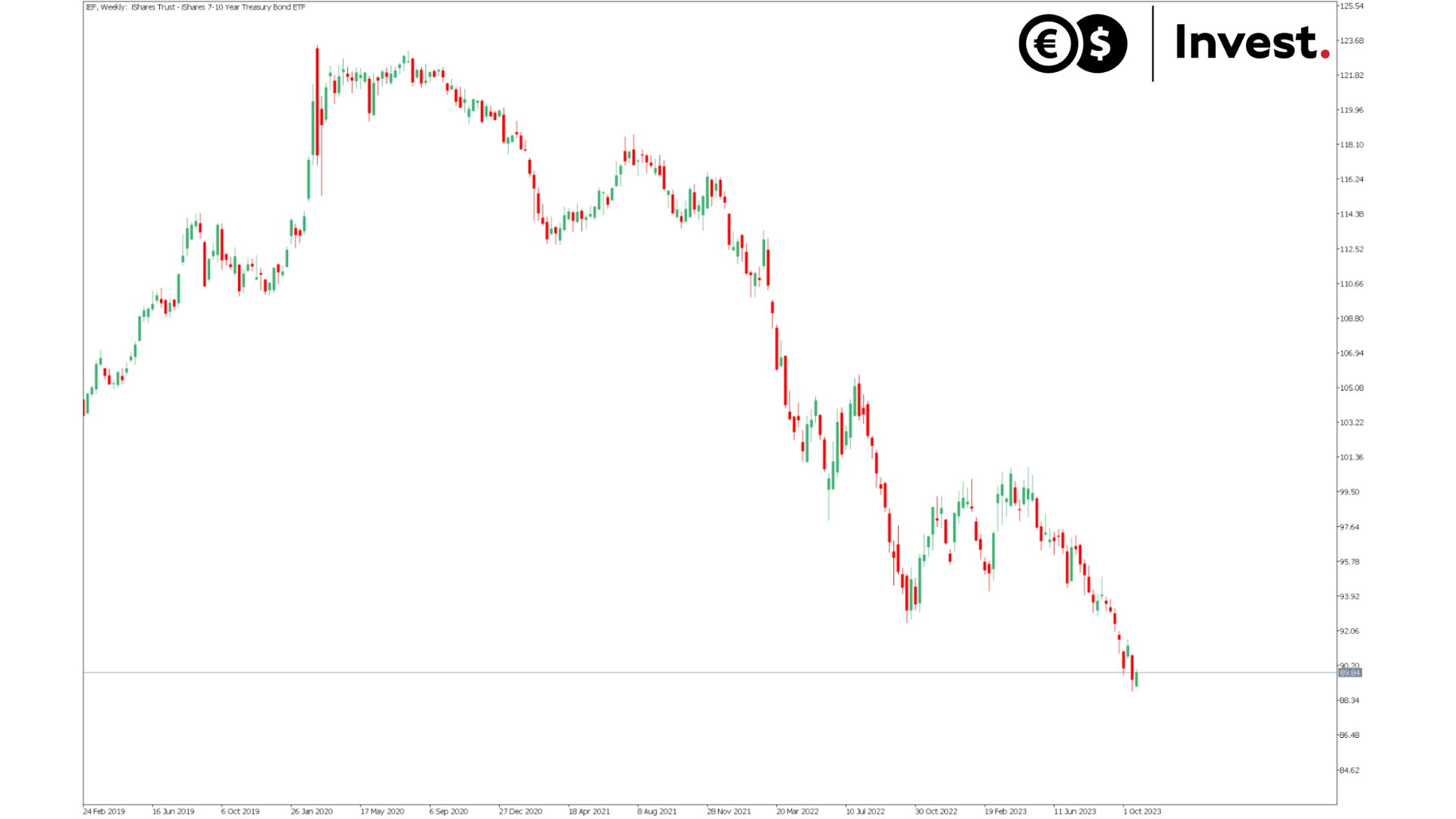
Source: Conotoxia MT5, IEF, Daily
-
iShares J.P. Morgan USD Emerging Markets Bond ETF (EMB)
ETF on: diversified government bonds of developing countries such as China, Brazil and Poland
Duration: 6.6
Yield (YTM): 8,4%
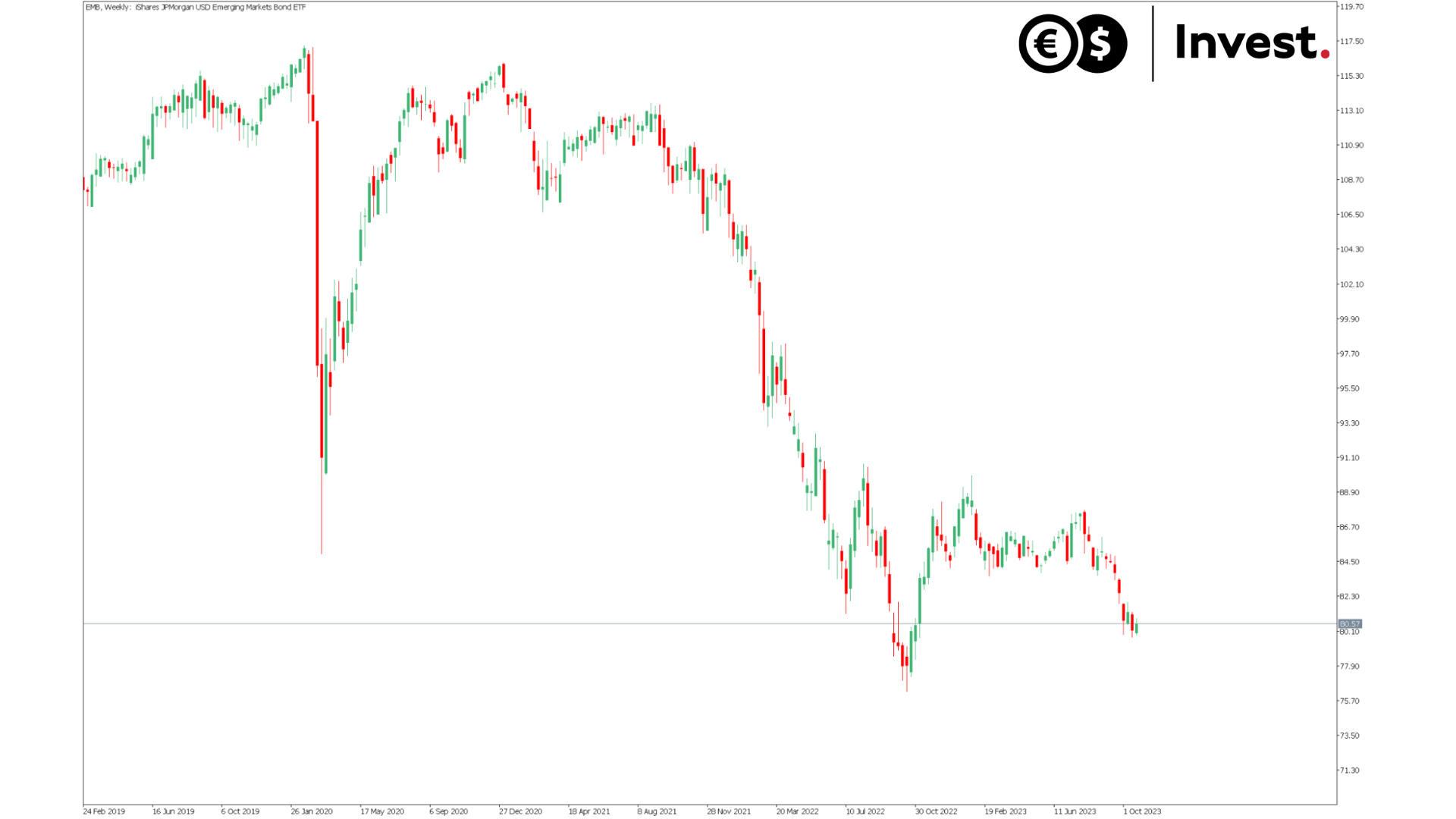
Source: Conotoxia MT5, EMB, Daily
Grzegorz Dróżdż, CAI MPW, Market Analyst of Conotoxia Ltd. (Conotoxia investment service)
Materials, analysis and opinions contained, referenced or provided herein are intended solely for informational and educational purposes. Personal opinion of the author does not represent and should not be constructed as a statement or an investment advice made by Conotoxia Ltd. All indiscriminate reliance on illustrative or informational materials may lead to losses. Past performance is not a reliable indicator of future results.
CFDs are complex instruments and come with a high risk of losing money rapidly due to leverage. 72.95% of retail investor accounts lose money when trading CFDs with this provider. You should consider whether you understand how CFDs work and whether you can afford to take the high risk of losing your money.


